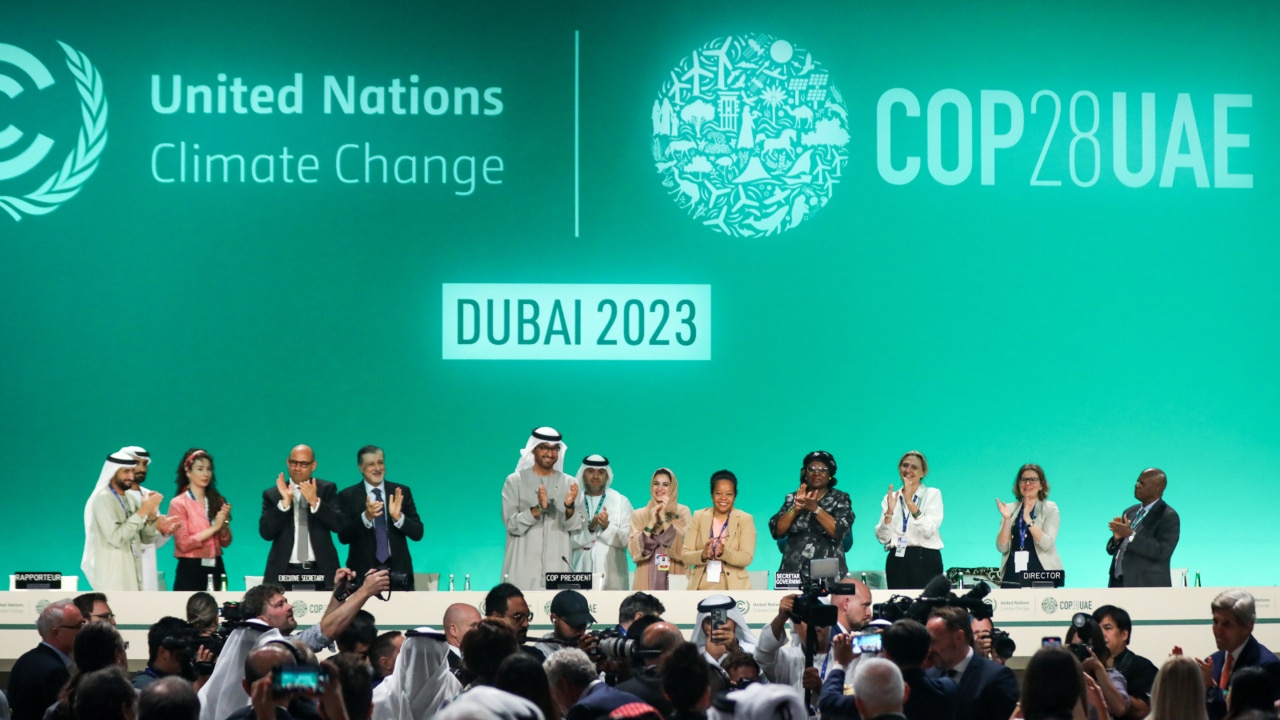Energy grid on the line in coal exit, says AEMO
Australia needs to double the roll-out of new transmission lines by the end of the decade, as the AEMO brings forward the expected exit of its coal-fired fleet.

Australia needs to double its roll-out of new transmission lines by the end of the decade or risk the reliability of the grid, as the energy market operator brings forward the expected exit of the network’s coal-fired fleet by five years.
Failure to win the support of farming communities and invest well ahead of when infrastructure is needed – rather than run a “just in time” strategy and hope that new generation and transmission infrastructure are ready when coal power stations are retired – poses a major risk to the stability of the nation’s power systems, the Australian Energy Market Operator has warned.
NSW got an early taste of what that instability could look like over a hot summer, amid warnings of possible blackouts on Thursday evening if households and businesses did not reduce power consumption, following the failure of a generator at Energy Australia’s Mt Piper power station.
Residents in the nation’s most populous state were being asked to turn up the temperature setting on their airconditioning and resist using non-essential appliances – such as washing machines and dishwashers – on Thursday night to ease the pressure on the NSW grid.
The December heat wave has posed the first major test of the National Electricity Market after the closure of the last generation units at AGL’s Liddell station in April.
The retirement of 1600 megawatts of capacity from Liddell has left the market more reliant on renewable energy for the summer. But, after renewed pledges at the COP28 summit in Dubai to reduce the world’s reliance on fossil fuels, AEMO’s latest system planning report again highlights the challenges facing the east-coast grid over the next decade.
In order to meet renewable energy targets, the planned expansion of transmission networks will need to double to about 5000km in the next 10 years, the report says.
The need to double the transmission rollout could throw further questions over whether Labor’s current $20bn Rewiring the Nation policy will be enough to pay for the acceleration.
AEMO says meeting Anthony Albanese’s 82 per cent renewable energy target by 2030 requires urgent infrastructure investment, or the National Electricity Market will not be ready for the early exit of coal.

AEMO’s report comes after Climate Change and Energy Minister Chris Bowen backed a deal at the COP28 meeting in the United Arab Emirates that for the first time called on all nations to “transition away” from fossil fuels to avoid the worst impacts of climate change.
“The message from this COP is loud and clear: our global future is in renewable energy,” Mr Bowen said. “The transition is on and needs to move faster. The outcome (of COP28) does not go as far as many of us have asked for, starting with some of the most vulnerable countries, but the message it sends is clear – that all nations of the world have acknowledged the reality that our future is in clean energy, and the age of fossil fuels will end.”
Mr Bowen’s comments followed 190 countries signing up to the UN climate change declaration, agreed to after days of heated discussions at the summit.
The market operator will release the draft of its 2024 integrated system plan on Friday.
AEMO chief executive Daniel Westerman said the latest system plan – the product of 18 months worth and consultation with more than 1300 stakeholders – showed that progress was being made on decarbonising the east-coast electricity system.
“In the next decade, this plan shows the need for 5000km of transmission, both new projects and those underway, triple renewable generation and double dispatchable storage, hydro and gas-powered generation,” Mr Westerman said. “While progress is being made, the transition is urgent and faces significant risks if market and policy settings, social licence and supply chain issues are not addressed.”

This week Infrastructure Australia sounded the alarm over the federal government’s ability to deliver its energy agenda, due to a tight labour market and shortages of building materials.
AEMO is now predicting that coal will completely exit the energy market by 2038, five years ahead of the date in the market operator’s 2022 system plan – but coal generation will fall to about half of its current levels by the end of the decade, the report says.
To replace coal generation, 4 to 6 gigawatts of renewable energy needs to be added to the market each year through to 2030, AEMO says. This needs to be backed by substantially more battery and other firming capacity, such as pumped hydro – and, mostly importantly, linked by an accelerated roll out of new transmission lines to so-called renewable energy zones.
About 4000km of new transmission corridors need to be delivered by 2030, the report says, and another 1000km of existing lines need to be upgraded. But work is bringing only five projects to fruition, AEMO says – and they will deliver about half of the transmission line extensions needed.
Thety are two projects in north Queensland; Project EnergyConnect to link NSW and South Australia, a line linking the Orana renewable energy zone in NSW, and the Western Renewables Link in Victoria. Another five projects are “actionable”, according to AEMO, including the Marinus line linking Tasmania to Victoria and the VNI West interconnector linking NSW to Victoria.
The report says there is a “clear need for urgent delivery of all actionable transmission projects” to make sure renewable energy can replace coal without risking the stability of the grid.
“Coal generators are retiring earlier than initially announced, and a ‘just in time’ transition to replacement infrastructure would risk reliable supply,” the report says. “The possibility of replacement generation not being available when coal plants retire is real and growing, and a risk that must be avoided. Unplanned generator outages are increasing, as coal plant reliability is affected by reduced investment and high-impact weather events.”
The Organisation of the Petroleum Exporting Countries – which includes members such as Saudi Arabia and the United Arab Emirates – successfully campaigned against the inclusion of any target for phasing out fossil fuels at COP28. But the inclusion of “transition away” from fossil fuels was heralded as significant by green groups and world leaders, given it was the first time a COP summit had explicitly agreed to shift from the energy source.





To join the conversation, please log in. Don't have an account? Register
Join the conversation, you are commenting as Logout